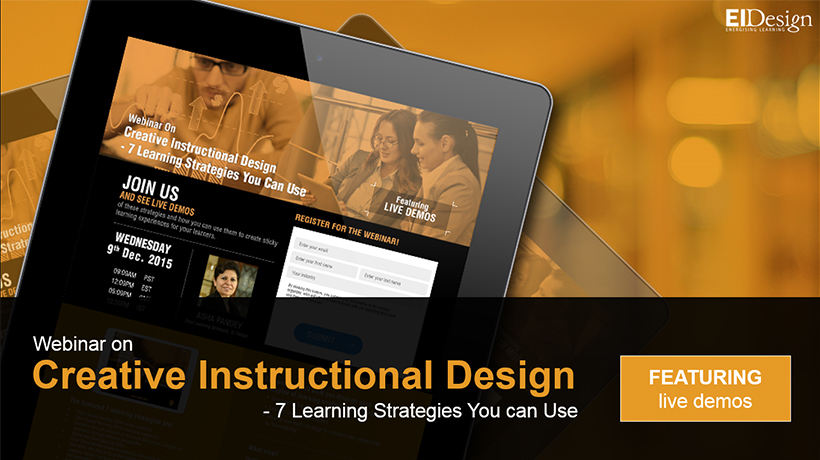
In today’s dynamic and evolving work environment, remote workers often feel disconnected. This post will highlight how you can use immersive learning to bridge gaps between learning and performance, drive behavioral change, and build a more connected workplace.
Why Should You Invest in Building Immersive Learning Experiences for Your Learners?
One key reason why an immersive learning environment is worth investing in is its “presence factor.” Remote and hybrid workers can sometimes miss out on the deeper engagement aspects that learning programs offer. Investments in immersive learning help connect remote teams and activate their interest in learning by creating a sense of “being there.” Immersive learning does that by erasing barriers of the physical world and providing as close to real simulated experiences to remote and hybrid learners.
On other levels, investing in immersive learning experiences deliver tangible benefits:
- It helps build emotional and cognitive thinking in the process of learning and experiencing. Technologies, like VR, AR, and Metaverse-based content, provide complete immersion, which produces a higher learner engagement quotient.
- The use of immersive learning technologies has made it possible to better integrate scientific learning principles into learning approaches. This makes learning “stickier” than traditional, non-immersive approaches.
- The integration of Big Data and learning analytics tools, into immersive learning products, means that L&D teams can now make better use of data to evaluate learning effectiveness and measure ROI on learning investments.
- The use of spatial design in immersive learning content helps deliver a more life-like training experience to learners. This not only increases knowledge retention but also enhances knowledge transference in the workplace.
When learners don’t find learning stimulating or feel their learning experiences are ineffective, they tend to disengage or gravitate to passive participation. The best way to address those issues is to invest in building immersive learning environments that motivate, excite, and connect learners to each other and to the learning needs.
What Are the Benefits of Creating an Immersive Learning Experience in Today’s Hybrid Workplace?
Delivering immersive learning experiences to hybrid workplaces promises several benefits, all grounded in a body of scientific research, including:
- Greater degree of personalized learning.
- Higher knowledge transference through the introduction of interactive “do and learn.”
- More realistic real-world learning experiences, because learners not only simulate what they’ll face on the job but they can also practice specific scenarios multiple times, as required, to gain proficiency.
- Opportunity to get learners to “fail earlier” by exposing them to a range of simulated future scenarios.
- Removing the risks associated with learning in traditional, non-immersive learning environments, such as working with hazardous chemicals, contagious pathogens, or high-risk surgical situations.
- Ability to leverage real-time data to initiate timely, data-driven learning interventions. This real-time feedback improves their real-world decision-making capabilities.
- Realizing better return on learning initiatives by giving hybrid learners the skills to positively impact business outcomes.
Remote and hybrid workers typically encounter higher barriers to learning, and far greater amounts of interruptions and disruptions while learning. Traditional learning approaches, such as reviewing text-based lessons, listening to audio learning content, or watching a PowerPoint presentation, typically engages learners through lower levels of cognitive interaction.
These approaches aren’t as effective at “true engagement.” Immersive learning, on the other hand, uses learning technology, techniques, and content that stimulates multiple senses, thereby engaging learners at much higher cognitive levels. Learners in the hybrid workforce, therefore, are more likely to absorb learning content, and more eagerly participate in learning.
How Do You Create an Immersive Learning Environment and Immersive Experiences for Your Learners?
Successful implementation of immersive learning solutions requires a methodical approach. The key is to define an appropriate and supportive immersive learning environment. This involves careful planning and design to build an immersive learning environment that’s not only unique to your organization’s learning needs, but also adopts learner-centered design approaches, complements other ongoing L&D initiatives, and helps learners put theory into practice in their unique workplace context.
Here’s how your learning environment can deliver positive immersive learning experiences:
Immersive Content Design
- Consider learner-centricity: This requires delivering unique learning experiences to every learner.
- Tap into learner motivations: A great way to tap into learner motivation is to promote the benefit of learning opportunities wherever and whenever possible. Highlight the “WIIFM” (What’s in it for me?) value proposition – self-improvement, promotions, pay hikes, professional certifications, industry accreditation, recognition, peer respect, and brighter prospects.
- Leverage EI: Leveraging the five aspects of Emotional Intelligence (EI) – self-awareness, self-regulation, self-motivation, social awareness, and social skills and relationship management – are integral to delivering positive cognitive immersive learning experiences to remote learners.
- Appeal to core learner values: Ensure that your content and the learning experience appeal to a core set of learner values, including a mindset of continuous learning.
- Factor in the need to foster learner participation and engagement when you design programs:
- Include aspects of interactive learning in program design, and design scenarios and practical use cases that hybrid work teams can relate to.
- Leverage the power of simulations.
- Include gentle reminders and nudges to steer hybrid learners into engagement with the program.
- Leverage performance support tools to evaluate how remote learners are doing as they travel down their personal learning paths.
- Factor for Accessibility and Diversity, Equity, and Inclusion (DEI): Ensure all content and environmental design elements adhere to applicable DEI standards, including Voluntary Product Accessibility Template (VPAT) and Web Content Accessibility Guidelines (WCAG).
Immersive Learning Strategies
- Choose the right strategy: The quality of immersive learning experiences is driven by your strategy. Therefore, it’s important to choose the right immersive learning strategy, whether it’s Gamification, Story Based Learning, Branching Simulations, AR/VR/ER and MR, Video Based Learning, or Scenario Based learning.
- Factor in learning on the go and learning anytime anywhere as part of a dynamic, responsive, learning design: To this end, leverage Microlearning interventions, Just-in-Time Learning, and On-the-Job Learning Tools as part of your immersive learning environment.
- Leverage real-world scenarios: The best way to ensure your immersive learning environment delivers its stated objectives, is to make it relevant and relatable to your target audience. Do that by centering learning content around real-world scenarios and use cases – and not based on hypothetical or abstract learning.
- Leverage Social Learning and learning cohorts to deliver personalized immersive learning experiences: Build and encourage the formation of learning communities so your learners can benefit from peer learning. Encourage Social Learning by organizing webinars, group discussions, seminars, subject matter expert (SME) talks, etc.
- Include aspects of real-time or near-real-time feedback into the environment: Offer opportunities to coach and mentor learners as they engage with the immersive learning program. Incorporate real-time feedback on performance, guided by the most appropriate rating scales applicable to your hybrid workforce. Map out personalized rater zones to assess the performance of each learner within your organization.
Immersive Learning Technology
- Choose a “content-driven” technology: Technology is the basic building block to creating immersive experiences for your learners. That’s because all other components of the immersive environment, including content, interactions, and the types of interventions (360-video, Animations, Podcasts, etc.) used hinge on your choice of appropriate technology.
- Use a combination of immersive technology and content strategy to enhance the impact (Gamified VR, Microlearning Based VR, Metaverse, Augmented VR [AVR]): Technology and content are two pillars of an immersive learning strategy. It’s important to use both pillars to drive excellence in each other. For instance, a learning-on-the-go strategy won’t take off without the support of appropriate mobile technology and a responsive design.
- Leverage LXPs to build immersive learning journeys and personalized learning: Learner Experience Platforms (LXPs) are critical to delivering immersive learning experiences. Because every learner has a unique learning style, and each has individual learning goals, LXPs can personalize and customize the learning environment to entice learners to immerse themselves and engage with learning content.
Parting Thoughts
Before you begin planning and developing immersive learning experiences for your workplace, there’s one golden rule to remember: While cutting-edge learning technology, such as AI, VR, and AR, provide the underlying basis for immersion, building the immersive learning environment should not be your only goal. True immersive learning requires both, the overarching technical architecture, as well as compelling and engaging content. Focusing on one aspect of the solution, at the expense of the other, is likely to result in a limited return on your immersive learning investment.
I hope this article provided the required insights on how you can use immersive learning to bridge gaps between learning and performance, drive behavioral change, and build a more connected workplace.
Read More
- eBook: 2023 Learning Trends for The Connected Workplace
- Focus Areas for Preparing a Learning and Development Strategy for 2023
- How to Conduct a Comprehensive Learner Needs Analysis
- How to Build an Effective Learning Technology Stack
- Metaverse and L&D – The Next Frontier in eLearning or Just Another Fad?



